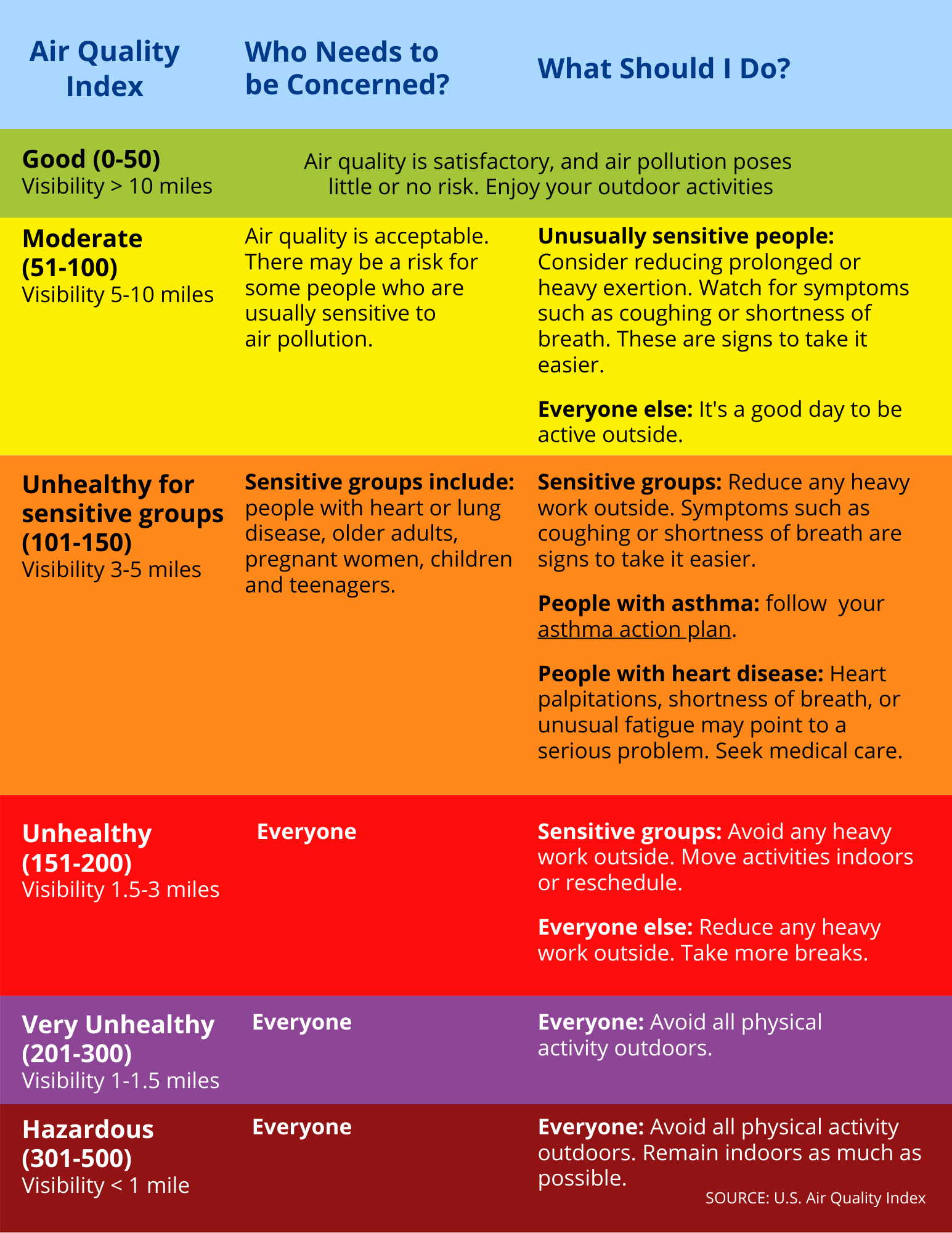San Andreas, CA…The Calaveras County Health Officer and Calaveras County Air Pollution Control District are issuing a joint air quality advisory to notify the public of the potential for poor air quality conditions primarily due to smoke from the Dixie Fire in Plumas County and the Caldor Fire in El Dorado County. This advisory shall remain in effect until Friday, August 20, 1:00 PM and may be extended depending on conditions. Smoke concentrations will vary across the county and may be severe in some locations.
Areas of smoke may affect Calaveras County from the lower foothills up into the High Country area, dependent upon wind direction, until the fires are extinguished. In the evenings, smoke tends to move downhill, becoming more concentrated in lower elevation areas including the foothills and the lower river drainage basins. In the afternoon and early evening hours, conditions may improve as smoke rises.
Smoke contains very tiny particles that can be inhaled deep into the lungs. Wildfire smoke can irritate your lungs, cause inflammation, affect your immune system, and make you more prone to lung infections. Symptoms may include, but are not limited to, coughing, watery and itchy eyes, headache, scratchy throat, and difficulty in breathing.
While people may experience varying degrees of symptoms, some people are at greater risk of harmful health effects from wildfire smoke such as:
Children under 18 years of age
Adults aged 65 and older
Pregnant women
People with chronic health conditions such as heart or lung disease, asthma, and diabetes
People who work outdoors
People who are immunocompromised or taking drugs that suppress the immune system
People who currently have or who are recovering from COVID-19
The best way to protect yourself from the harmful effects of wildfire smoke is to reduce your exposure to it. Take action to protect yourself from wildfire smoke:
Stay indoors with the windows and doors closed, if possible Use a portable air cleaner in one or more rooms. Portable air cleaners work best when run continuously with doors and windows closed.
Whenever you can, use air conditioners, fans, and window shades to keep your cleaner air space comfortably cool on hot days.
Run your air-conditioner only if it does not bring smoke in from the outdoors. Change the standard air conditioner filter to a medium or high efficiency filter. If available, use the recirculate or recycle setting on the unit
Limit outdoor exertion and physical activity
Avoid activities that create more indoor and outdoor air pollution, such as smoking, frying foods, sweeping, and vacuuming.
Reduce unnecessary driving. If traveling through smoke-impacted areas, be sure that your vehicle’s ventilation system is on recirculate
Get a COVID-19 vaccine as soon as you can. COVID-19 vaccines help protect you from getting sick or severely ill with COVID-19 and may also protect people around you, especially when physical distancing is difficult.
Cloth masks that are used to slow the spread of COVID-19 by blocking respiratory droplets offer little protection against wildfire smoke. They might not catch small, harmful particles in smoke that can harm your health. N95 and KN95 respirators can provide protection from wildfire smoke.
Anyone experiencing serious symptoms due to smoke should contact a health professional. Persons who have a respiratory-related illness may also wish to consult their health care provider if they are experiencing smoke exposure.
Keep in mind that air quality can change rapidly at different times during the day due to wind shifts; therefore, it is important to monitor the smoke throughout the day in your area and make outdoor plans accordingly.
Information on air quality and smoke can be found at the EPA’s Airnow updated Fire and Smoke webpage at https://fire.airnow.gov which shows particulate matter data from permanent and temporary air monitors along with low-cost sensor data and smoke plume visualizations.
The Calaveras County Air Pollution Control District will continue monitoring the air quality in the county and will provide additional advisories as air quality conditions evolve.
Use the chart above as a guideline for outdoor activities. The distance you can see (visibility) can be an
indicator of how concentrated the smoke is in your location.
For more information, call the Calaveras County Air Pollution Control District at (209) 754-6601 or Calaveras County Public Health Division at (209) 754-6460



